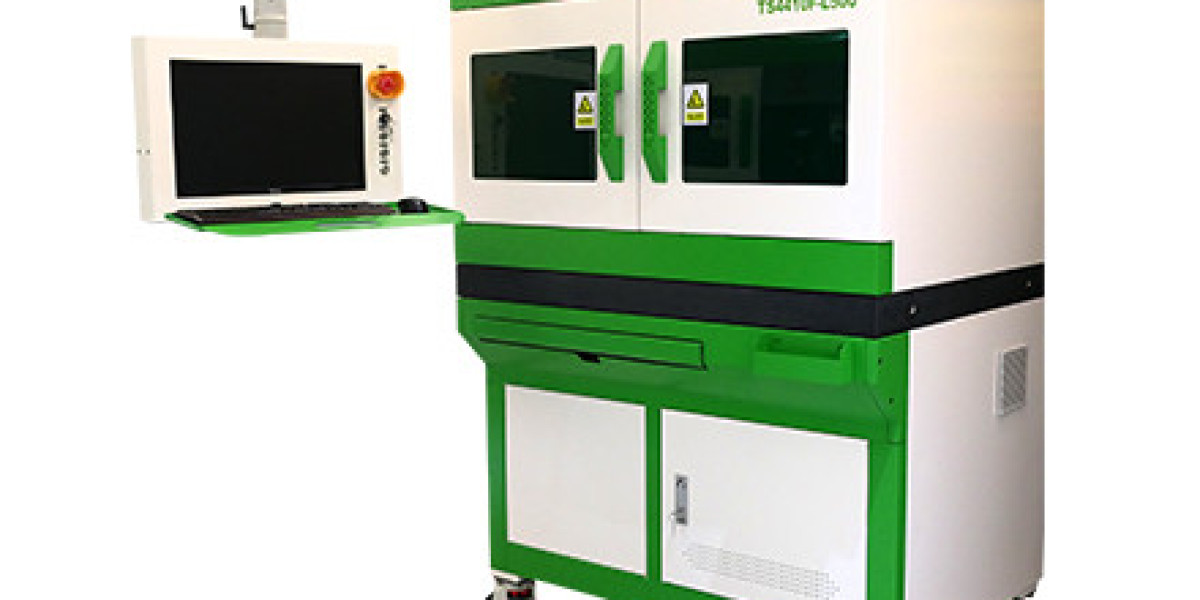In modern electronics manufacturing, precision is everything. From aerospace to medical devices, even the smallest fluctuation in a resistor’s value can affect circuit performance. That’s where laser resistor trimming comes in — a highly accurate method of adjusting resistor values to meet tight specifications. With the help of advanced laser trimming equipment, engineers can ensure performance, consistency, and miniaturization like never before.
What is Laser Resistor Trimming?
Laser resistor trimming is a process that uses focused laser beams to remove small amounts of resistive material from thick or thin-film resistors. This adjustment changes the resistor's value with incredible accuracy, often within a tolerance of ±0.01%.
The process involves measuring the resistor's actual value, comparing it to a target value, and then using a laser trimming equipment system to precisely ablate material until the desired resistance is achieved. Common trimming methods include:
Straight line cuts
L-cuts
Serpentine or notch cuts
This method is non-contact, quick, and works well with ceramic substrates, hybrid circuits, and PCB-integrated resistor arrays.
Why Use Laser Trimming Equipment?
Modern laser trimming equipment combines laser technology, real-time measurement systems, vision alignment, and automation. It allows manufacturers to:
Achieve precise tolerance levels without mechanical stress
Increase production yield by minimizing rejected parts
Automate trimming for high-volume production
Perform on-the-fly testing and compensation
Most trimming systems are based on Nd:YAG or UV lasers, depending on the application material. The integration of software-controlled feedback loops ensures that trimming stops the moment the correct resistance is achieved.
Some of the leading equipment brands offer multi-channel platforms, 3D laser trimming for non-planar surfaces, and advanced safety and diagnostics features. Choosing the right laser trimming equipment depends on production volume, resistor size, trimming complexity, and integration needs.
Resistor Advantages Enhanced by Laser Trimming
Using laser resistor trimming brings out the full resistor advantages, especially in applications where high precision and stability are critical. Key benefits include:
Improved Accuracy: Trimming allows resistors to meet exact specifications, improving circuit performance.
Thermal Stability: Lasers do not induce excess heat stress, preserving material integrity.
Miniaturization: Enables smaller resistor sizes while maintaining performance, ideal for mobile and medical devices.
Long-Term Reliability: Laser-trimmed resistors demonstrate superior consistency over time.
Customization: Engineers can adjust resistance values post-manufacturing to compensate for design variations.
By enhancing these resistor advantages, laser trimming contributes to more reliable and compact electronics.
Applications of Laser Resistor Trimming
Laser trimming equipment is commonly used in:
Medical electronics (e.g., pacemakers, diagnostic equipment)
Aerospace systems (where tolerance and reliability are mission-critical)
Automotive electronics (for sensors, ECUs, and ADAS modules)
RF and microwave circuits (where impedance matching is crucial)
As electronics become more complex, the demand for high-performance resistors — and precise laser resistor trimming — continues to grow.
Conclusion: Precision That Powers the Future
From improving accuracy to enabling cutting-edge applications, laser resistor trimming is indispensable in advanced electronics manufacturing. With the help of intelligent laser trimming equipment, engineers can fine-tune resistance values to perfection. Combined with the inherent resistor advantages, this process ensures high reliability, performance, and flexibility in product design.
As industries move toward smarter and smaller devices, laser-trimmed resistors will remain a foundation of innovation.








